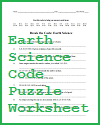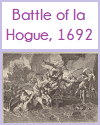| Causes Chart Graphic Organizer |
|---|
| www.studenthandouts.com ↣ Graphic Organizers ↣ Graphic Organizers: Processes |
 |
    |
|
This free printable causes chart graphic organizer worksheet features a large main effect box with arrows leading from four cause boxes.
Click here to print. Charting the causes of an event can be highly beneficial for students for several reasons: Critical Thinking: Analyzing and charting causes require critical thinking. Students must evaluate different factors and their relationships to understand the event's origins thoroughly. Understanding Complex Situations: Many events have multiple causes, which can interact in complex ways. Charting causes helps students dissect these complexities and identify key drivers. Causal Relationships: It teaches students about causal relationships—how one factor can lead to another or how several factors can combine to create an outcome. Historical and Analytical Skills: For history and social studies students, charting causes is a foundational skill. It helps them interpret historical events and understand the impact of various factors on society. Organizing Information: Charting causes provides a structured way to organize information, making it easier for students to study and review complex topics. Predictive Abilities: By analyzing causes, students may develop the ability to predict future events based on similar causes. This skill is valuable for understanding historical patterns and making informed decisions. Problem Solving: The same analytical skills used in charting causes can be applied to problem-solving in various contexts. Students can learn to identify the root causes of problems and work toward effective solutions. Contextual Understanding: Charting causes helps students place events in their broader historical, social, or political context. This contextual understanding is crucial for interpreting events accurately. Debate and Discussion: Charting causes can serve as a basis for classroom debates and discussions. Students can analyze causes from different perspectives and draw their conclusions, fostering critical discourse. Writing and Communication Skills: The ability to explain and communicate causes clearly is valuable in academic writing and oral presentations. Learning from History: Understanding the causes of past events can help students avoid repeating historical mistakes and make informed decisions in the present and future. Interdisciplinary Learning: Charting causes often involves interdisciplinary learning. Students may explore historical, economic, social, and political factors, gaining a well-rounded education. Research and Information Literacy: To chart causes effectively, students often need to research and evaluate various sources. This reinforces research and information literacy skills. Empathy and Perspective-Taking: Understanding the causes of events can lead to empathy as students learn about the experiences of people involved in those events. It can promote perspective-taking and a more comprehensive worldview. Ownership of Learning: Charting causes encourages students to take ownership of their learning. They are actively engaged in exploring and interpreting information, promoting a sense of responsibility for their education. Preparation for Complex Decision-Making: As students grow, they may face complex decisions in their personal and professional lives. The ability to analyze causes and consequences is a valuable skill for making informed choices. Charting the causes of an event is a valuable exercise that fosters critical thinking, historical understanding, problem-solving, and analytical skills. It prepares students to engage with complex issues, whether in the classroom or in the world beyond. |
| www.studenthandouts.com ↣ Graphic Organizers ↣ Graphic Organizers: Processes |








